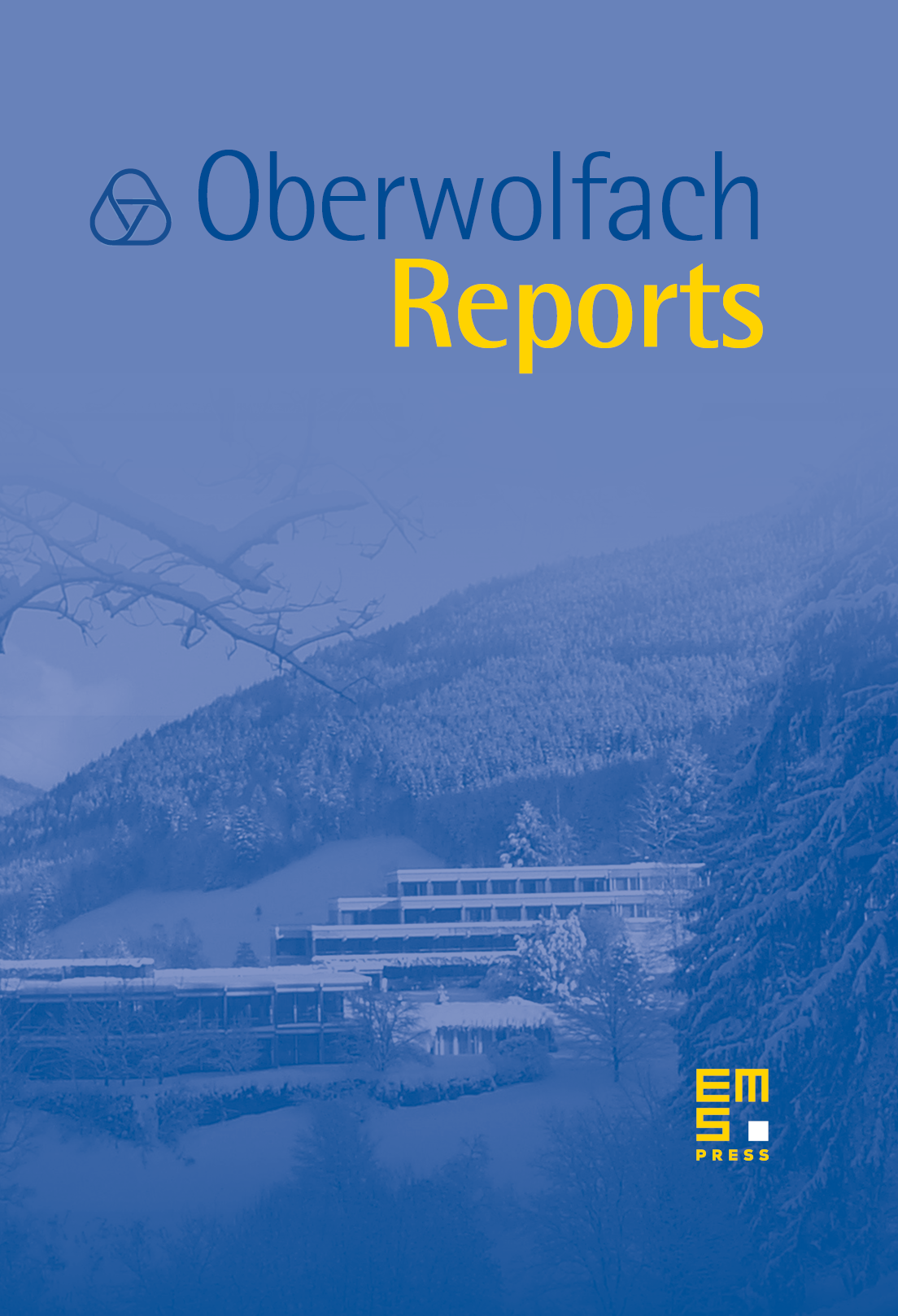Random Schrödinger Operators and Random Matrices
Friedrich Götze
Universität Bielefeld, GermanyWerner Kirsch
FernUniversität Hagen, GermanyFrédéric Klopp
Université de Paris XIII, Villetaneuse, FranceThomas Kriecherbauer
Ruhr-Universität Bochum, Germany

Abstract
It is natural to model the spectral behaviour of disordered quantum systems by the typical spectral properties of random operators. Depending on the underlying physics different kinds of ensembles have been introduced. Two types of ensembles, random Schrödinger operators and random matrices, have proved to be of particular interest because of their wide ranges of applicability and because of their rich mathematical structures. On first sight these two types of random operators may appear to be close relatives. However, as it turns out, their typical spectral properties differ significantly. Moreover, the methods that have been developed for their respective analysis have little in common. One may say that over the years two different cultures have evolved leading to two almost disjoint mathematical communities. It was the goal of this workshop to stimulate exchange between these two communities by highlighting important recent developments in both areas.
The workshop brought together 44 researchers from 9 different countries. This report contains the extended abstracts of the 30 lectures that were delivered during the meeting.
The transition from ordered to disordered system was the main topic of four lectures.
There were 14 talks about random Schrödinger operators. One of the major topics was the theory of Anderson localization/delocalization. The density of states, especially the investigation of Lifshitz tails was the subject of several contributions. The third topic in this field concerns the theory of level statistics which is a very active field at the moment. This area is much inspired by the theory of random matrices.
Twelve of the lectures were related to the theory of random matrices. In these talks a variety of ensembles, results, open problems, and methods of proof were discussed that yield a somewhat representative picture of the current state of the art in this field. The ensembles considered include the two classical cases of Wigner ensembles (independent entries) and of invariant ensembles (invariant under appropriate changes of basis). Some of the lectures dealt with more general classes of ensembles that are motivated by applications in physics and statistics. Most of the results that were presented are concerned with local correlations of eigenvalues, with the distribution of the largest eigenvalue and with (central) limit theorems for spectral quantities. One talk was devoted to the Asymmetric Simple Exclusion Process, generalizing a much celebrated result that provided a connection to random matrix theory.
Finally, it is our happy task to thank all the participants for the lively discussions, the staff of Oberwolfach for providing such perfect and pleasant working conditions and Bernd Metzger for collecting and editing the extended abstracts.
Cite this article
Friedrich Götze, Werner Kirsch, Frédéric Klopp, Thomas Kriecherbauer, Random Schrödinger Operators and Random Matrices. Oberwolfach Rep. 5 (2008), no. 2, pp. 797–868
DOI 10.4171/OWR/2008/16